Dead and dying White Elm trees. Results from several different microscopic sac fungi (all of which are probably exotic) that infect the tree when one of two elm bark beetles (one of which is exotic) feed on its bark. The beetles reproduce and continue spreading the fungi to other elm trees. Early signs include significant leaf wilting in early summer, with brown leaves clinging to the tree for some time, followed by the tree dying from the fungal infection within a year or two. Other signs include very small boring holes, reddish-brown or black beetles about 2 to 3 mm long, networks of beetle feeding galleries just inside the bark, and brown staining under bark.
Most common in floodplains, and today along cultivated fields. This insect fungi combination makes for a very contagious disease that has destroyed most White Elm trees in Nova Scotia.
First found in Liverpool in 1969, probably brought to North America in wooden crates made of elm wood.
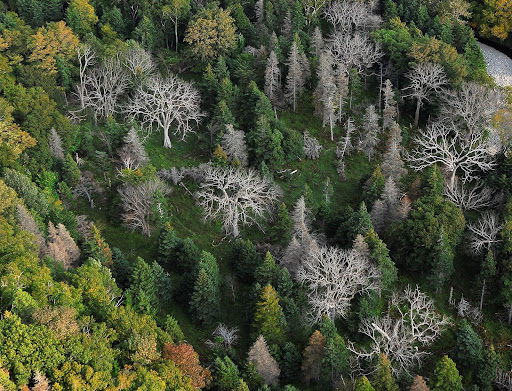
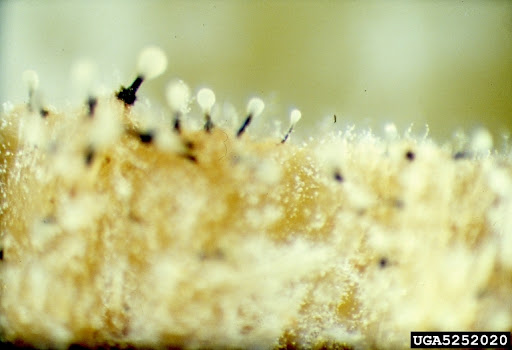
Leaf wilt, brown leaves, and brown stains under bark.

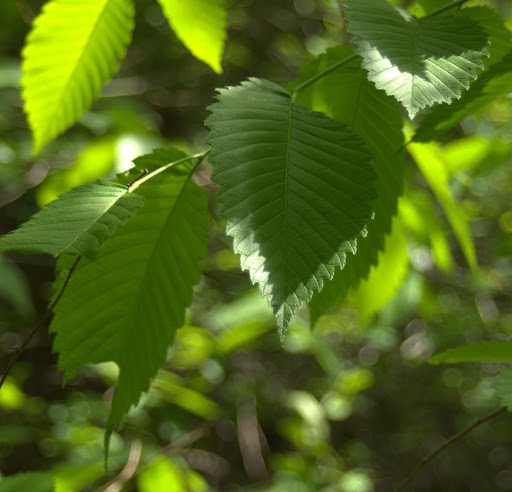
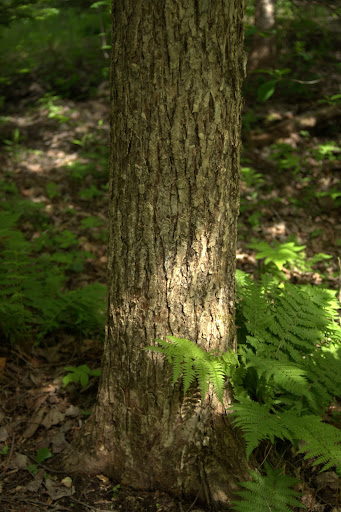
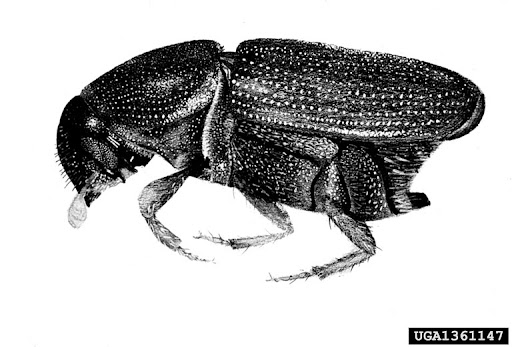
The fungi was identified by a Dutch phytopathologist in 1921, hence its common name.
Only about one in 100,000 White Elm trees displays some level of resistance to Dutch Elm Disease. If you have healthy White Elm trees in your woodlands, let them disperse their seeds so that the species persists. Use local wood products to avoid the long-distance transportation of insects and pests from faraway timber and firewood.
Encourage government and industry to do everything in their powers to prevent other insects and diseases from entering our province and harming our forests. If you spot this invasive species, report the location to iNaturalist, or directly to the NSISC.
Join our mailing list.